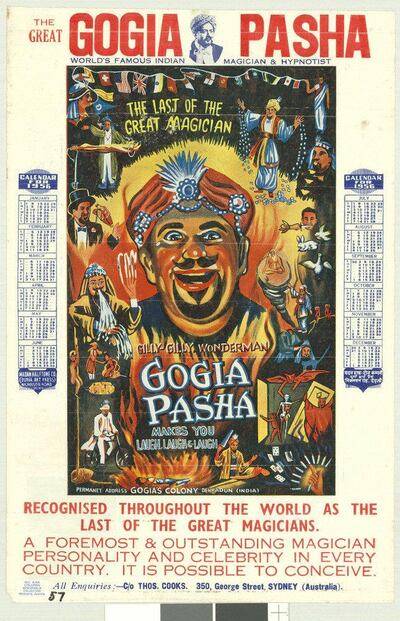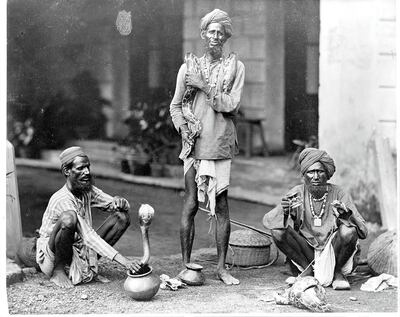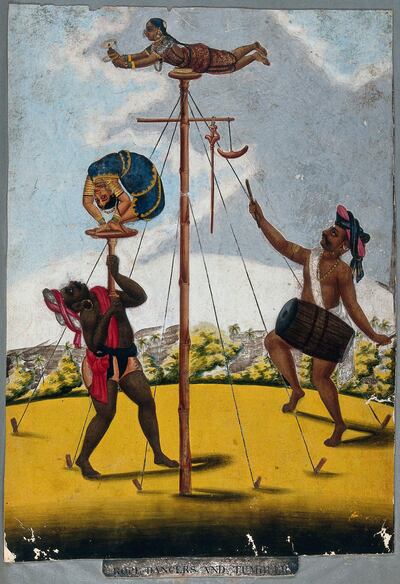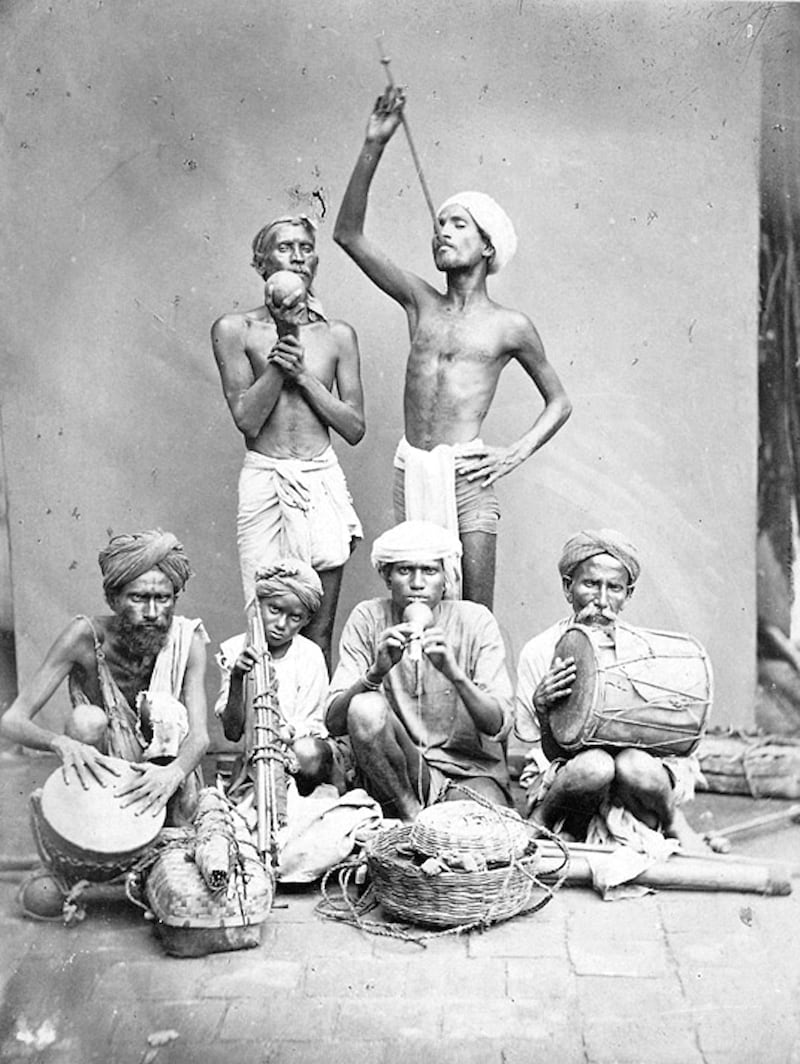In the 1930s, a travelling showman from Birmingham, Arthur Claude Derby, decided to take on a challenge posted by the Magic Circle (the British organisation dedicated to all things magic). A 500-guinea prize would be given to anyone who could perform the Indian Rope Trick, and having refashioned himself as a mysterious Indian fakir called Karachi, Derby not only performed the trick along with his son, Kyder, but also repeated it in extraordinary circumstances, including in a snowstorm, leading to a much-publicised battle with the Circle and a long-winded investigation into how the trick is done.
It's a piece of history that particularly enthralled author John Zubrzycki, who went on to write a book on the matter. "I love the legend of the Indian Rope Trick; it became the most contested and famous feat of Indian magic because of a piece of fake news that went viral in 1890," Zubrzycki says.
His book, Jadoowallahs, Jugglers and Jinns: A Magical History of India, published by Picador, is replete with countless stories such as these, which make up an incredible treatise; indeed celebrated Scottish historian and writer William Dalrymple described it as "a book of marvels".
Magic permeates
"To tell the story of Indian magic is to hold a mirror to India's religious traditions, its society and culture," Zubrzycki writes. "Magic permeated the Vedic period, Sufis and yogis staged miracle contests to see whose jadoo was more powerful, Buddhists and Jains resorted to spells and incantations to win philosophical debates."

The 61-year-old Australian writer took on a gargantuan task when he set out to pen the first comprehensive narrative of the history of Indian magic. At more than 450 pages, Jadoowallahs, Jugglers and Jinns is no breezy read, not because it's difficult to understand, but because every sentence is loaded with enough historical interest to demand a chapter of its own. "My interest in putting together this book arose after discovering the curious interactions between eastern and western stage magicians, and the very real influence Indian magic had on western popular culture," Zubrzycki tells The National. "As I did my research, I found, to my astonishment, that rubbing shoulders with various conjurors, tricksters, illusionists, jugglers and cunning conmen, were some of the more illustrious figures in Indian history, including Motilal Nehru, Madam Cama and Subhas Chandra Bose [prominent political figures in India's fight for independence]. "To present the story of Indian magic, you have to look at the historical, societal, cultural and even political history of India and the role magical traditions played in these histories."
In history
It's difficult, if not impossible, to pin down the exact moment or even period when magic came about in India. The earliest references can be found in ancient texts such as the Vedas, but magic as stagecraft – and a way to entertain and make money – has been an Indian phenomenon for thousands of years. Unfortunately, because most street performers are illiterate, there has been little to no preservation of written histories that can accurately help trace the growth of Indian magic. There's also the aspect of secrecy – magic thrives on keeping tricks secret, not just for singular performers but for the genre as a whole. If the mechanism of an illusion gets out, it would entirely lose its allure.

Zubrzycki's book demonstrates the impact Indian magic has had on contemporary stagecraft, which has experienced a massive revival, thanks to stage shows such as The Illusionists and Now You See Me. But Indian magicians rarely feature in the global narrative, he says.
"Aside from names such as P C Sorcar Senior and Gogia Pasha, very few people have heard of India's other great magicians, some of whom – such as Linga Singh and Kuda Bux – were as famous as Harry Houdini, yet completely forgotten."
The Basket Trick is one such feat that continues to be used in modern shows – upgraded, yet the roots are unmistakable. A street rendering remains, and is in Zubrzycki's mind, one of the greatest things he has ever witnessed. "It was amazing to watch an old street magician perform a version of the Basket Trick out in the open on a dusty square in front of a railway station in West Bengal in the late '70s. After stabbing a boy trapped in a basket with a long knife several times, the magician lifted the boy out with the blade sticking through his neck." He was, of course, alive.
A fascination with India
Zubrzycki has been enthralled by India for more than 30 years. A journalist by profession, he completed his undergraduate degree in South Asian history at the Australian National University in the early 1980s, and lived in the country for six years in the 1990s, working at first as a diplomat with the Australian High Commission, and then as a foreign correspondent. Now, Zubrzycki teaches modern Indian history at the University of New South Wales, and Jadoowallahs is his third book. His first, The Last Nizam: The Rise and Fall of India's Greatest Princely State, told the story of Mukarram Jah, the eighth Nizam of Hyderabad, who inherited one of the largest fortunes in the world only to see it turn to dust on a sheep station in Western Australia.

Zubrzycki's second book The Mysterious Mr Jacob: Diamond Merchant, Magician and Spy unearthed the story of Alexander Malcolm Jacob, an enigmatic figure of the British Raj.
Drawing from a deep well of narratives written by emperors, travelling historians, traders, government officials, businessmen and Orientalists found in magazines, museums, magic societies, archives and libraries around the world, Zubrzycki's book feels like an elementary puzzle pieced together to present a picture never seen before.Faced with a timeline that spans thousands of years, Zubrzycki clarifies right at the outset that this latest book is an exploration into Indian magic's legacy as entertainment. "When it comes to magic, who can resist a good magic show?" he says. "What I found remarkable was that behind every trick is a story, one that goes back hundreds if not thousands of years, and behind every magician there is a legacy he or she is following. More often than not, that history and legacy goes back to India."
"The stories I encountered during research often took my breath away," he says. "I lost myself in descriptions of ancient palaces where the walls could speak, the floors of temples moved like the waves on the sea, and Sufi mystics watched as magicians threw ropes in the air that never came down. There is so much in India that awaits the historian's gaze."
The book will almost certainly now be the standard any further work on this subject will be measured by. Charmingly, apart from its refreshing lucidity, what's most striking about it is that Zubrzycki's sense of wonder and awe permeates the pages, making reading it even more enjoyable.
"This is a far richer, more complex and uncharted book than I ever imagined. People ask why I wrote a book on the history of Indian magic, but once they read it, they can't understand why no one has done it before!"
Jadoowallahs, Jugglers and Jinns is available on Amazon







